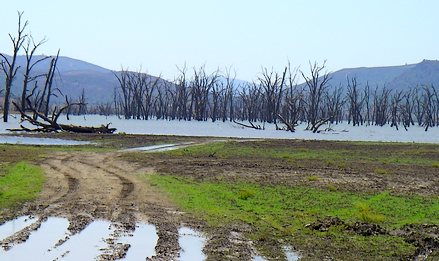Everyone knows how fishermen simply open up to the polite inquiry of a summer intern when statistics and national averages are involved. Notepad at the ready, some poor fellow interrupted in his watery reverie, glances up impatiently and answers, “anything large, but fishing’s crappy” – which immediately pads the numbers in favor of the warmwater crowd.
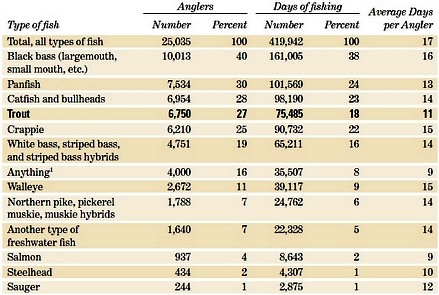
The most recent and exhaustive study of trout fishermen and their habits has been released by the US Fish and Wildlife Service for the calendar year 2006, and trout remains fifth behind them padded numbers enjoyed by our warmwater brethren.
Brownliners fall under the “Another Type of Freshwater Fish” – as those summer interns didn’t dare get close enough to learn what we were really fishing for … or with … and with our lack of social graces, a big stack of clean white paper at the trailhead has a more fundamental use than make-work for the eggheads in statistics lab.
… thankfully there’s 12% less of us.
the number of freshwater and trout anglers 16 years and older in the U.S. has decreased. The number of trout anglers has decreased from around 9 million anglers in 1996 to 6.8 million in 2006. Diminished trout populations due to whirling disease and habitat destruction may have contributed to some of the decline in angler participation. As for freshwater anglers, their numbers have declined from 29 million anglers in 1996 to 25 million in 2006. Between 2001 and 2006 participation declined by 3 million freshwater anglers.
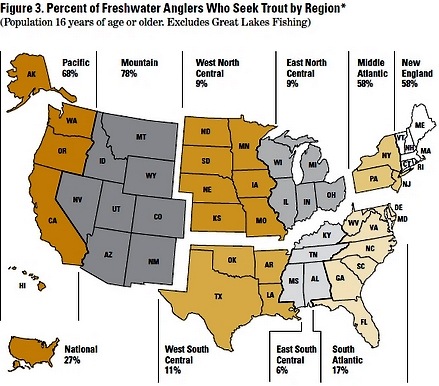
Not surprising was the vast surge of anglers flocking to coarse fishing. Likely a response to the ravenous hordes of Asian Carp headed deep into the interior, fish fleeing the Gulf of Mexico – figuring a sewer drain in Sheboygan cleaner, and the fact that the Roughfisher had a couple of offspring during the census …
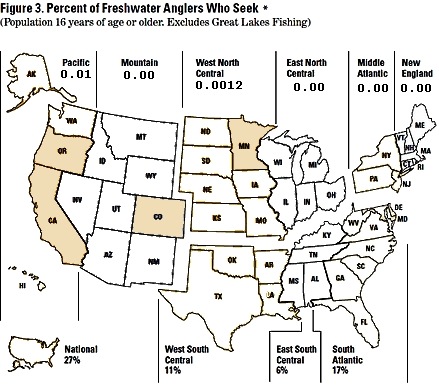
Gender
Fishing continues to be a male dominated sport. Females make up a quarter (25 percent) of all freshwater anglers and even fewer trout anglers (21 percent). This is disproportionately lower than the U.S. population where women are the majority at 52 percent (Table 7).
While many women 16 years of age and older participated in freshwater fishing (6.3 million), this comprised only five percent of the female population in the U.S.
Not to worry lads, the continual bikini posts from the likes of Trout Underground and Moldy Chum represent the vast uncounted population of single, buxom women – less than sixteen years old …
… and if you do anything but look, it’s the last trout you’ll see that’s not wearing trousers.
Age
Trout fishing is popular at any age (16 years or older). At least 21 percent of freshwater anglers in every age category fished for trout (Table 8). However, about half of all trout anglers (49 percent) are between the ages of 35 to 54 years old.
Which is why your extreme angling e-zine whose every page dripped garishly with energy drink ads – vanished. Trout fishing is what guys do when they lack the reflexes for anything else – there to wax poetic until the Grim Reaper baits the hook …
Though trout fishing is predominately made up of a middle-aged generation, the trend is moving toward older participants.
Which is why those music video posts are wasted space. You’re thinking Johnny Larnyx and the Expectorants, and your audience is keen for Sinatra, Noob.
Overall, trout anglers tend to complete more years of education than freshwater anglers and the U.S. population.
They’re smart and discerning, yet claim their quarry smarter – making them humble too.
Twenty-four percent of trout angler households earned more than $100,000, compared with only 17 percent of households in the U.S.
I’ll have to add an asterisk to the above. Twenty-four percent (24%) earned more than $100,000 per year, most were spending in excess of $200,000 per year, went late on their house payment – tapped their 401K, and realized their house was underwater to the tune of $250,000.
As they’re smarter and hold more advanced degrees, most “jinglemailed” the house keys back to their mortgage broker, and are now living with Mom & Dad, complaining about the quality of the local Frappachino …
… collecting unemployment and fishing more often, the bastards.
More importantly we find the valuation in net economic benefit of a trout stream, and the arcane methodology by which pollution of same and the disappearance of all life results in a pittance fine and slap on the wrist for industry …
The difference between what the trout angler is willing to pay and what is actually paid is net economic value. Therefore, for this example, the net economic value is $175 [(($55–$20) ×10÷2) (triangle bcd in Figure 6)] and angler expenditures are $200 [($20×10) (rectangle abde in Figure 6)]. Thus, the trout anglers’ total willingness to pay ($375) is composed of net economic value ($175) and total expenditures ($200).
Net economic value is simply total willingness to pay minus expenditures. The relationship between net economic value and expenditures is the basis for asserting that net economic value is the appropriate measure of the benefit an individual derives from participation in an activity and that expenditures are not the appropriate benefit measure.
Expenditures are out-of-pocket expenses on items an angler purchases in order to fish. The remaining value, net willingness to pay (net economic value), is the economic measure of an individual’s satisfaction after all costs of participation have been paid. Summing the net economic values of all individuals who participate in an activity derives the value to society. For example, assume that there are 100 trout anglers who fish at a particular stream and all have demand curves identical to that of our typical trout angler presented in Figure 6. The total value of this stream to society is $17,500 [$175 × 100].
… despite a home on the banks of the now dead same creek being worth $6.5 million.
At $20 Billion for the entire Gulf of Mexico – I’m thinking those government negotiators was tough as nails.
The net economic values can be used to evaluate management actions that would have an impact on trout fishing. For example, the impact of dam construction, dam removal, and other human activities along trout streams can affect trout angler participation rates. Also, dams can negatively influence trout fishing by creating physical barriers to spawning areas or increasing water temperatures. Let’s assume that in 2006 the state of Maine proposed a policy action to remove an old dam from a trout stream to improve its water quality to blue ribbon status. If a fishery manager knows the number of days Maine residents go trout fishing on a blue ribbon trout stream with no dams over the whole season, 1,000 days for example, it is possible to develop an estimate of the fishery gains from the dam removal. This estimate is accomplished by multiplying the net economic value per fishing day ($30 from Table 13) by the days of participation, resulting in $30,000 ($30 x 1,000). If the fishery manager had data on the number of in-state and out-of-state anglers then the numbers could be adjusted to reflect their appropriate values.
… except it takes $4.5 million to remove the old dam, restock the native plants and historic populations of fish, another $60,000 because some well meaning angler likes Rainbows more than native Brookies, and you’ll get a net return on the investment in about 135 years.
Which is why dams aren’t being wrenched from their foundations by a gleeful mob of contractors.
Tags: Fish and Wildlife Service, trout angling statistics, fly fishing humor, damn lies and statistics, trout, trout fishing, Jinglemail, Sinatra

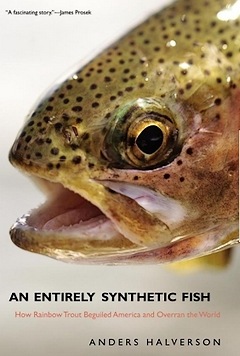 The true game-fish, of which the trout and salmon are frequently the types, inhabit the fairest regions of nature’s beautiful domain. They drink only from the purest fountains, and subsist upon the choicest food their pellucid streams supply … [It] is self-evident that no fish which inhabit foul or sluggish waters can be ‘game-fish’.’ It is impossible from the very circumstances of their surroundings and associations. They may flash with tinsel and tawdry attire; they may strike with the brute force of a blacksmith, or exhibit the dexterity of a prize fighter, but their low breeding and vulgar manner of eating, betray their grossness.”
The true game-fish, of which the trout and salmon are frequently the types, inhabit the fairest regions of nature’s beautiful domain. They drink only from the purest fountains, and subsist upon the choicest food their pellucid streams supply … [It] is self-evident that no fish which inhabit foul or sluggish waters can be ‘game-fish’.’ It is impossible from the very circumstances of their surroundings and associations. They may flash with tinsel and tawdry attire; they may strike with the brute force of a blacksmith, or exhibit the dexterity of a prize fighter, but their low breeding and vulgar manner of eating, betray their grossness.”
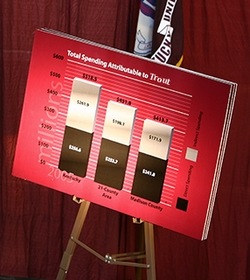 Nothing like a research paper to wave angrily in front of county planners while they debate paving your favorite trout stream…
Nothing like a research paper to wave angrily in front of county planners while they debate paving your favorite trout stream…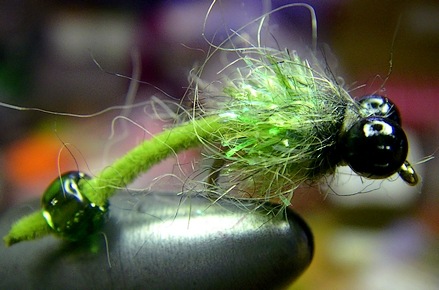
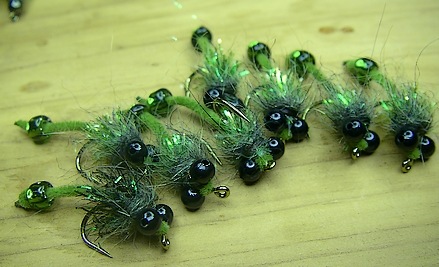
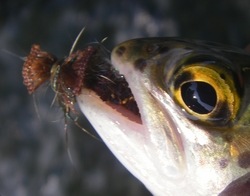 Big trees, cold water, and a ready shade tree with rock to perch under – so I can dangle them big, tired Lumberjack feet in cold water …
Big trees, cold water, and a ready shade tree with rock to perch under – so I can dangle them big, tired Lumberjack feet in cold water …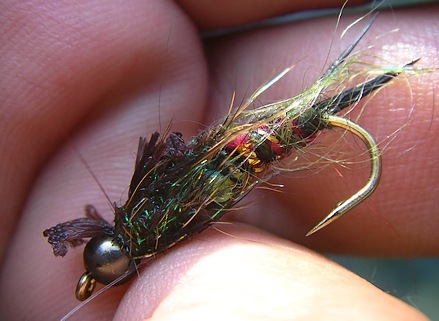
 Fishing is dominated by the unorthodox – a lesson drilled home after chasing year’s of uncooperative slimy – it’s the lack of boundaries fish display when hungry, despite the countless reams of angling text arguing the contrary.
Fishing is dominated by the unorthodox – a lesson drilled home after chasing year’s of uncooperative slimy – it’s the lack of boundaries fish display when hungry, despite the countless reams of angling text arguing the contrary.



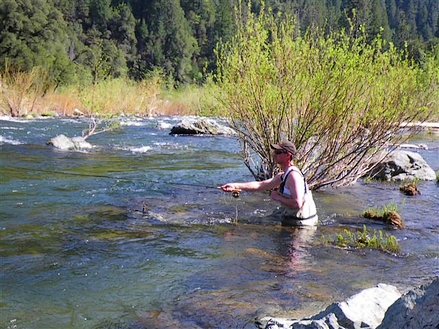
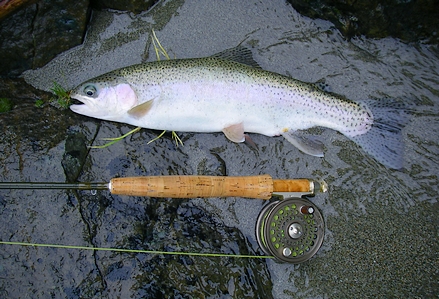


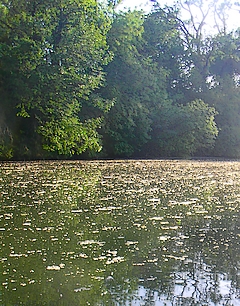 The first fellow was towing a lure that looked like a plucked Olive chicken carcass – minus saran wrap and foam plate. I says, “what’s your buddy throwing – a pizza?”
The first fellow was towing a lure that looked like a plucked Olive chicken carcass – minus saran wrap and foam plate. I says, “what’s your buddy throwing – a pizza?”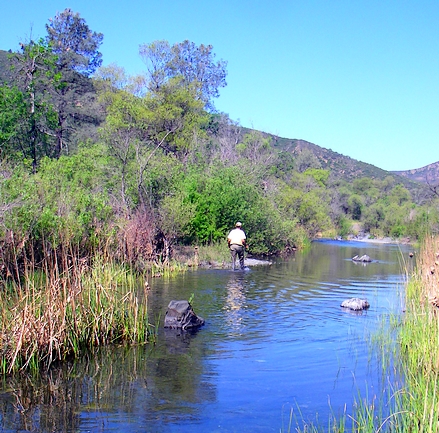
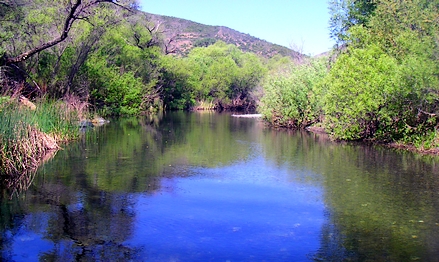
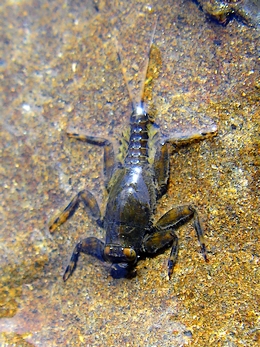 My first blush would be some form of drake – two tails, pronounced mottle on all extremities – and large enough to make you snap off that anemic #16 and reach for the box containing meat…
My first blush would be some form of drake – two tails, pronounced mottle on all extremities – and large enough to make you snap off that anemic #16 and reach for the box containing meat…